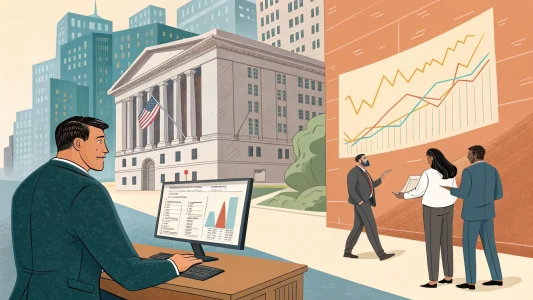Table of Contents
ToggleThe Market Today and Its Historical Echoes
I have long observed market conditions with a careful eye. At times, the market appears to be an environment where investors seem to be waiting for the music to stop. Today’s market is no exception. I use the analogy of musical chairs to describe this phenomenon. In my view, when market valuations exceed normal levels, the risk of a significant decline increases, much like in a heated game where each participant scrambles for a seat as the music draws near its end.
My analysis draws on two notable periods in recent history. The first was during the tech frenzy of 1999. During the dot-com bubble, investors bid high prices for future potential, often not backed by actual earnings. The second example is from 2021. As some market voices, including one notable personality working from a modest space, urged investors to buy, the market reached similar high valuation levels. Today, we see that many of these familiar patterns are reappearing.
View this post on Instagram
Understanding Market Valuations
Valuations are at the heart of this market’s condition. A key metric that I reference is the price-to-earnings (P/E) ratio. This ratio compares the price of a stock to its earnings, helping to gauge whether the market is overvalued or undervalued. Recent numbers show that buyers in the S&P 500 are paying roughly $22 for every dollar earned by the companies in the index. This is well above the historical average of 17.
When the market trades at levels that differ significantly from the historical norm, it is a sign that caution is necessary. In particular, I note that a P/E ratio above 20 can be a signal of a “musical chairs market.” In such a situation, investors may face a scenario where the decline in valuations could force many to adjust their positions abruptly. Historical data suggests that if we reverted to more typical valuations, the drawdown could be around 23%.
The Importance of Cash and Diversification
A key takeaway from past market turbulence is the importance of liquidity and portfolio diversity. Warren Buffett, a respected investor whom many look to, has long illustrated this concept. With a significant amount of cash set aside, he prepares for a time when the market might drop or face substantial shifts. His approach contrasts with those who tend to stay fully invested, hoping to secure what might appear to be the final available opportunity as the market reaches extreme levels.
This observation leads me to stress the importance of diversification. During periods when market valuations reach high levels, placing all one’s funds into a single asset class can be risky. Instead, a well-balanced portfolio that includes cash, bonds, and other asset classes may offer a safer path through the inevitable market adjustments.
Key Lessons from Past Market Conditions
The past provides valuable lessons that are relevant today. Here are some crucial points to consider:
- Historical precedents: The dot-com bubble of 1999 and the market surge of 2021 serve as reminders that high valuations often precede corrections.
- Valuation warnings: A price-to-earnings ratio above 20 historically signals a vulnerable market environment.
- Liquidity matters: Holding cash can provide the flexibility needed during market downturns, as demonstrated by Warren Buffett’s strategy.
- Diversification is key: Spreading investments across different asset classes helps mitigate risk when market conditions change.
These points underscore the importance of a careful and measured strategy when market valuations surge. Investors must be prepared to step back, assess the inherent risks, and adjust their portfolios accordingly. This cautious approach is crucial when market sentiment suggests that a downturn may be imminent.
The Musical Chairs Market in Action
Describing the current market as a musical chairs game effectively captures the essence of what I have repeatedly observed over the years. Picture a scenario where a finite number of chairs represent the limited opportunities available at favorable valuations. As the market’s music plays on, investors move quickly, trying to avoid being left without a seat when the music stops.
In this analogy, if you are the investor who stays overly invested without a diversified plan or sufficient liquidity, the likelihood of ending up without a “chair” in a downturn increases. It serves as a reminder that staying agile is crucial. Turbulent market conditions require investors to avoid complacency and remain prepared to adjust their strategies when the market’s rhythm shifts.
Assessing Risk and Reward
Step back and examine the interplay between risk and potential reward. High market valuations can offer opportunities for gains, but they also come with heightened risks. The possibility of a drawdown of about 23% is not a trivial matter. Such a decline can have a significant impact on an investor’s portfolio.
This reality calls for a balanced approach. One should not be seduced by the promise of short-term gains when valuations exceed typical levels. Instead, a strategy that includes periodic rebalancing and active risk management is advisable. While market upsides exist, protecting one’s capital during inevitable downturns is essential.
In my roles as a financial planner and analyst, I have frequently emphasized that risk mitigation is as important as seeking growth opportunities. Remember, it is better to have a diversified and cautious strategy than to commit fully to a market poised for correction.
Practical Steps for Investors
Given the current market environment, it is wise for investors to consider concrete steps. These include reviewing your portfolio to ensure it is diversified and confirming that you are not overly exposed to high-valuation areas. It is also prudent to maintain a reserve of cash to take advantage of opportunities when adjustments occur.
The following actions may help investors better navigate these conditions:
- Review your portfolio to ensure that it includes a mix of asset classes.
- Monitor market valuations closely, particularly the P/E ratio of major indices, such as the S&P 500.
- Consider holding a portion of your assets in cash to provide flexibility during downturns.
- Stay informed and adjust your strategy as market conditions evolve.
These steps are simple yet effective means to prepare for market volatility. They aim to support a cautiously optimistic strategy that values preparedness over speculative optimism.
Personal Reflections on Market Timing
Although it may be tempting to try to time the market perfectly, history shows that this strategy can be risky. I have seen how trying to capture every upward move often leads to missed opportunities or exposure to severe downturns. Instead, a balanced strategy that recognizes the signs of an overheated market is preferable.
The musical chairs analogy serves as a stark reminder that when many investors are chasing the last available seat, the risk of being left behind increases. Hence, maintaining discipline and a diversified portfolio can safeguard against the pitfalls of market exuberance.
My goal is to empower investors with a clear understanding of these market dynamics. I strive to offer practical advice that cuts through the noise. The emphasis is always on preparation, risk management, and thoughtful portfolio construction.
Looking Ahead with Caution and Preparedness
As I reflect on the current market scenario, I believe caution is necessary. History has taught us that once the exuberance ends, significant corrections can follow. The market, much like a high-stakes game of musical chairs, can change its tune suddenly and without warning.
The takeaway for investors is to be prepared. While it is natural to be optimistic during times of sustained growth, it is equally important to recognize when warning signs appear. Watching for valuation markers such as the P/E ratio enables investors to gauge when the market may be overheated.
In my practice, I advise diversifying investments, holding a portion in cash, and being ready to adjust your portfolio. This balanced approach protects capital and positions investors to capitalize on market corrections when they occur.
Final Thoughts
In conclusion, the market’s current condition is reminiscent of past episodes where high valuations led to steep corrections. This “musical chairs market” scenario calls for a clear strategy: diversify your investments, manage risks prudently, and maintain a measured approach. The lessons from historical periods remind us that staying flexible and prepared can make a significant difference during turbulent times.
I sincerely hope that this discussion helps you navigate the market with a well-informed perspective. By keeping these principles in mind, investors can better position themselves in an environment where the stakes are high and the music might stop at any moment.
Frequently Asked Questions
Q: What does a musical chairs market mean?
It is a term used to describe a market environment where high valuations create a scenario similar to a game of musical chairs. In such conditions, investors must swiftly adjust their strategies to avoid significant losses.
Q: Why is diversification important during high market valuations?
Diversification spreads risk across different asset classes. It helps protect your overall investment portfolio in case one segment of the market faces a downturn.
Q: What role does cash play in managing market risk?
Holding cash provides flexibility. It enables you to capitalize on opportunities when market corrections occur and helps protect your portfolio against sudden declines.

















